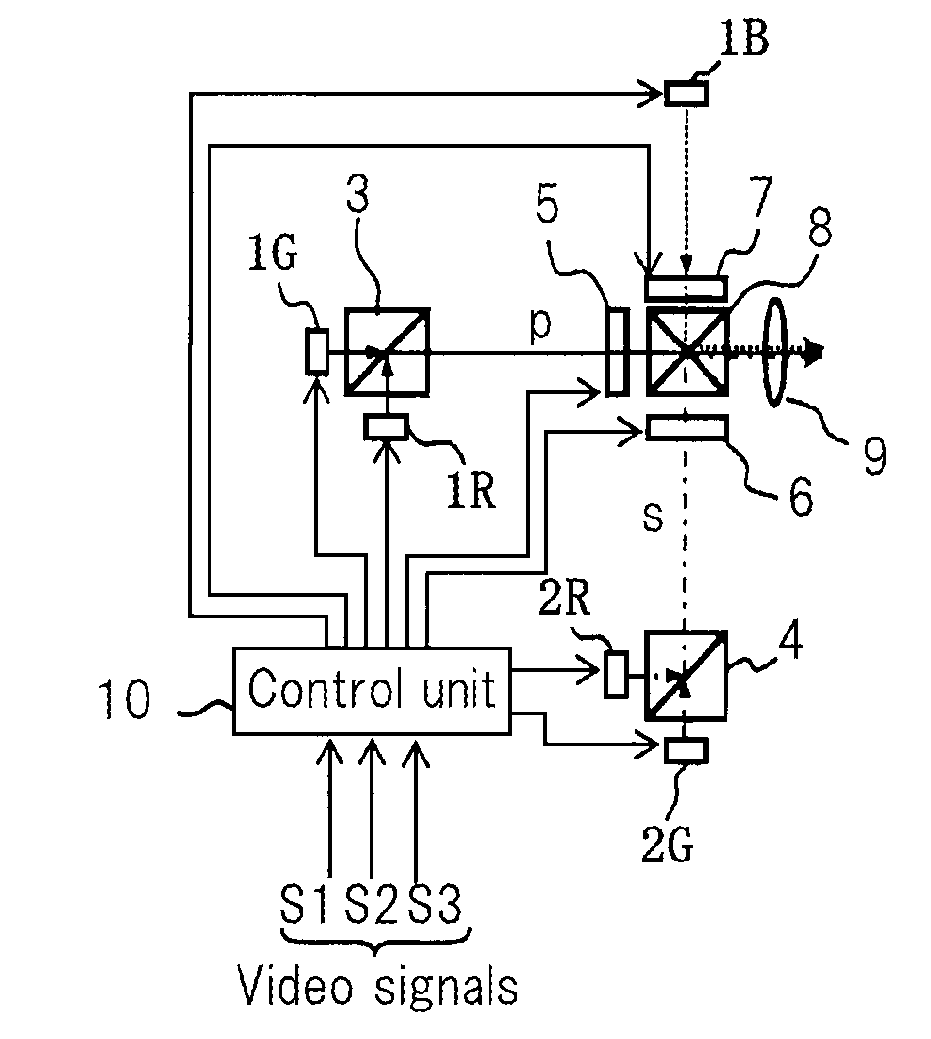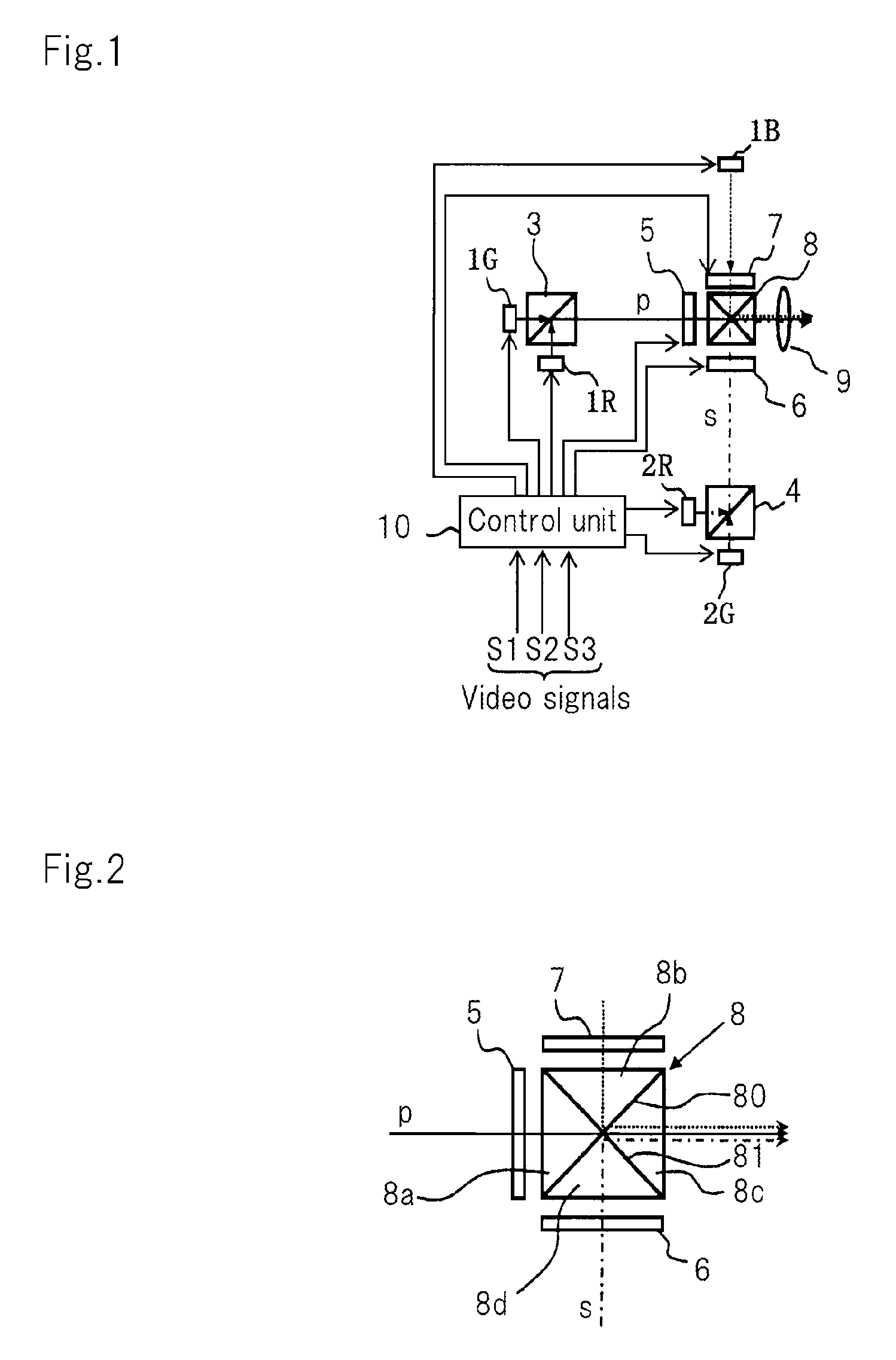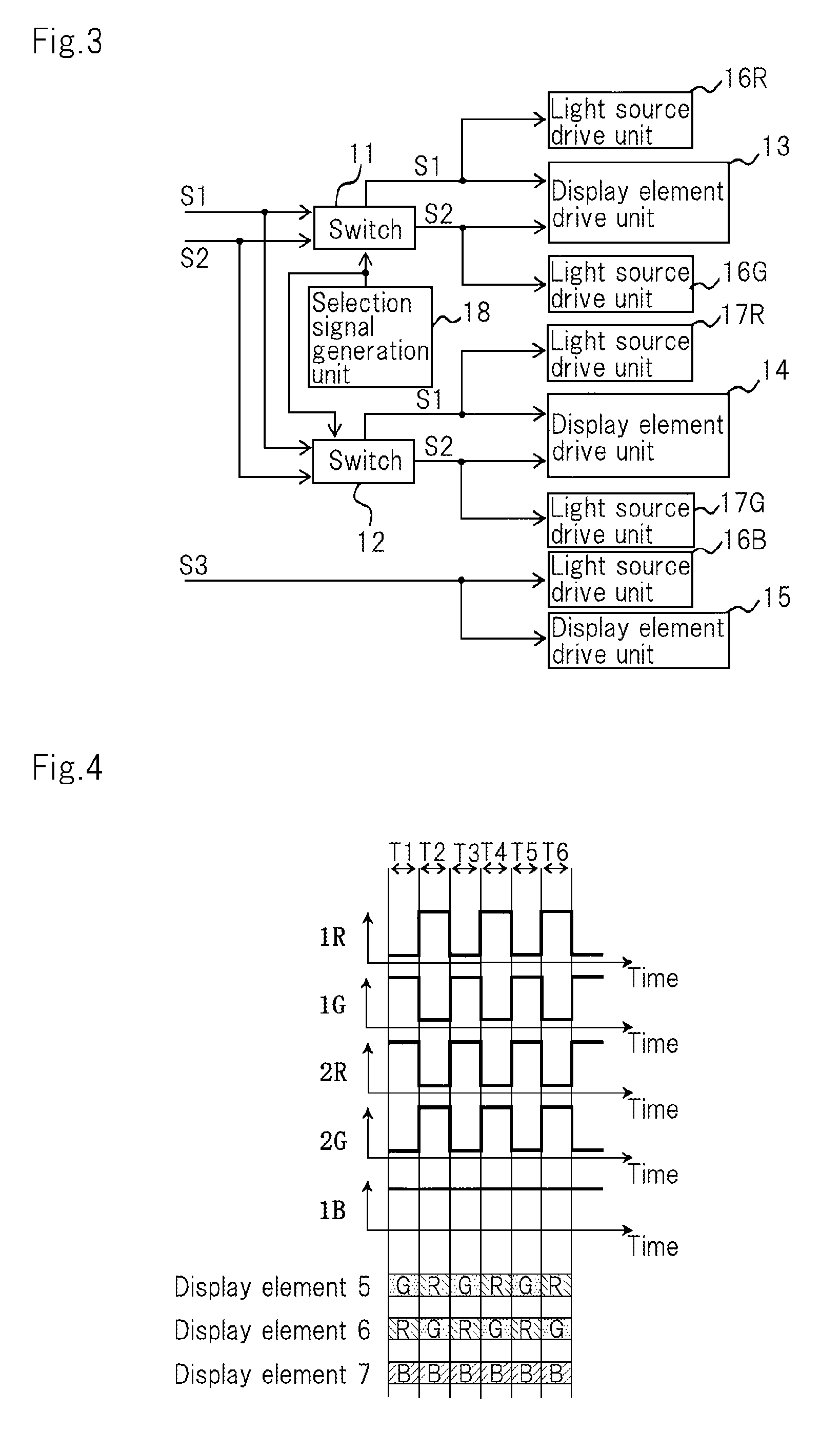Projector spatially modulating incident light to display images of different colors
a projector and incident light technology, applied in the field of projectors, can solve the problems of increasing costs, occupying considerable space, and complicating miniaturization, and achieve the effects of reducing luminance, increasing green light, and increasing red light luminan
- Summary
- Abstract
- Description
- Claims
- Application Information
AI Technical Summary
Benefits of technology
Problems solved by technology
Method used
Image
Examples
Embodiment Construction
[0050]Exemplary embodiments of the present invention are next described with reference to the accompanying drawings.
[0051]FIG. 1 is a block diagram showing the configuration of the projector that is an exemplary embodiment of the present invention.
[0052]The projector shown in FIG. 1 includes: solid-state light sources 1B, 1G, 1R, 2G, and 2R; dichroic prisms 3 and 4; display elements 5-7; polarization cross dichroic prism 8; projection optics 9; and control unit 10.
[0053]Solid-state light source 1B is a solid-state light source having a peak wavelength in the blue wavelength band and is constituted by, for example, an LED or semiconductor laser for which the color of emitted light is blue. In the present exemplary embodiment, solid-state light source 1B emits blue P-polarized light or blue S-polarized light.
[0054]Solid-state light sources 1G and 2G are solid-state light sources having peak wavelength in the green wavelength band and are constituted by, for example, LEDs or semiconduc...
PUM
 Login to View More
Login to View More Abstract
Description
Claims
Application Information
 Login to View More
Login to View More - R&D
- Intellectual Property
- Life Sciences
- Materials
- Tech Scout
- Unparalleled Data Quality
- Higher Quality Content
- 60% Fewer Hallucinations
Browse by: Latest US Patents, China's latest patents, Technical Efficacy Thesaurus, Application Domain, Technology Topic, Popular Technical Reports.
© 2025 PatSnap. All rights reserved.Legal|Privacy policy|Modern Slavery Act Transparency Statement|Sitemap|About US| Contact US: help@patsnap.com



